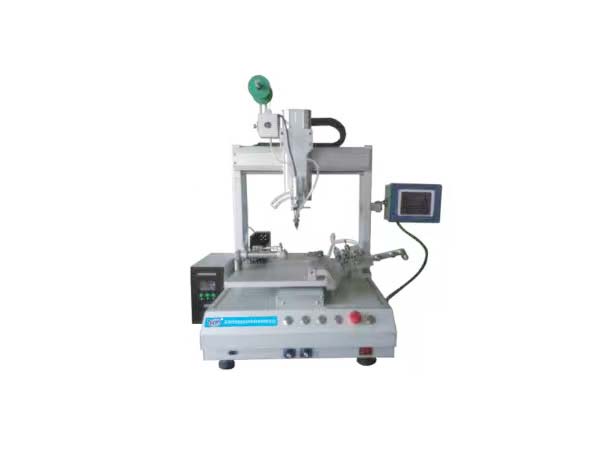Non-standard automatic soldering machines are customized and developed automated soldering equipment based on specific user requirements. Their core lies in meeting the demands of special soldering tasks and production processes through personalized design. The following is an overview from four aspects: definition, advantages, application scenarios, and technical features:
I. Definition and Core Characteristics
Non-standard automatic soldering machines belong to non-standard automated equipment. They are customized and developed after users put forward specific requirements. Compared with traditional standard soldering machines, its design needs to be closely integrated with the customer's product structure, process parameters and production environment. For example, for the soldering requirements of ultra-small precision electronic devices or irregular metal components, parameters such as temperature, time, pressure and soldering trajectory should be precisely set.
Ii. Core Advantages
Precisely adapted to special welding tasks
Parameters can be customized for welding objects with special shapes, structures or materials (such as the tiny sensors of high-end medical equipment) to ensure the accuracy and reliability of the solder joints, which is difficult to achieve with standard soldering machines.
Highly optimize the production process
It can be embedded in the specific production line of an enterprise and seamlessly integrate with upstream and downstream equipment. For instance, in the production of automotive electronic components, it is linked with automated assembly equipment to reduce material handling and waiting time, significantly enhancing overall efficiency.

Flexibility and scalability
The design reserves upgrade space to support the expansion of functional modules (such as the introduction of an intelligent visual inspection system) or process adjustments, avoiding the drawback of having to replace standard equipment as a whole.
Iii. Typical Application Scenarios
The field of high-end manufacturing
It is applied to the soldering of semiconductor packaging (such as LSI, IC, CSP, BGA) and precision electronic components (such as printed motherboards, small switches), solving process problems that wave soldering cannot handle.
Special industry demands
In fields such as aerospace, aviation, and national defense, where the reliability of solder joints is highly demanded, we provide customized solutions for the soldering requirements of through-hole components.
Small-batch trial production and flexible production
It is suitable for production lines in the trial production stage or with frequent product iterations. By quickly adjusting parameters, it can meet diverse demands and reduce the cost of trial and error.
Iv. Technical Features
Parameter customization
Supports personalized Settings of parameters such as temperature, time, pressure, and soldering trajectory, adapting to high-difficulty operations and micro-soldering processes.
Multi-axis linkage and high precision
By adopting multi-axis mechanical arms and precise motion control algorithms, a repeat positioning accuracy of ±0.02mm is achieved, ensuring the stability of complex trajectory welding.
Intelligent function expansion
It can integrate functions such as visual inspection, automatic cleaning, and anti-collision protection to enhance welding quality and equipment safety. For instance, the quality of solder joints can be monitored in real time through a visual system to reduce manual intervention.
about
Introduction video case honor partners factoryproduct
Automatic welding line Non-standard customization Automatic soldering Glue/screw lockingnews
dynamic Information faqCustomer Service
contactMr. Xia:+86 186-7696-3763

WeChat QR code

Douyin QR Code
Copyright © 2025 Copyright © Dongguan Chuangxiao Automation Technology Co., Ltd.
本站相关网页素材及相关资源均来源互联网,如有侵权请速告知,我们将会在24小时内删除